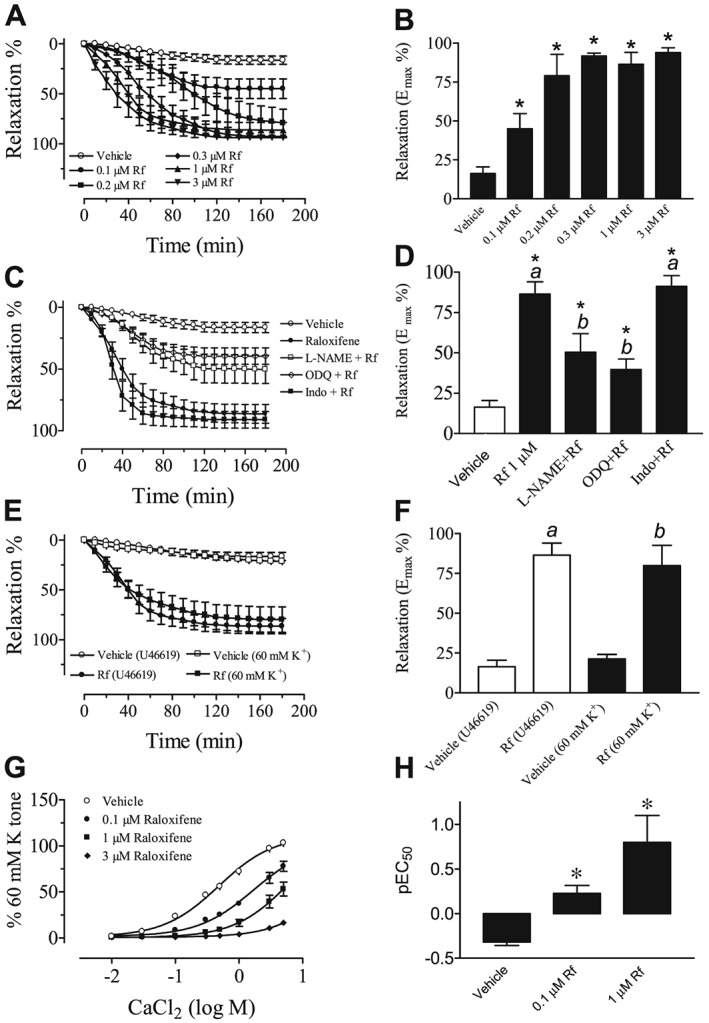Figure 1.

(A) The time course for the relaxant response induced by different concentrations of raloxifene (Rf; 0.1–3 μM) in the U46619‐contracted endothelium‐intact aortic rings. (B) The steady‐state maximum relaxation to raloxifene. Statistical differences are indicated by between vehicle control and raloxifene group (*P < 0.05). Results are mean ± SEM of six to seven rings from different rats. (C) The inhibitory effects of L‐NAME (100 μM) and ODQ (3 μM) on raloxifene (1 μM)‐induced relaxation in endothelium‐intact rat aortic rings. Treatment with indomethacin (Indo, 3 μM) was without effect. (D) Steady‐state maximum relaxation induced by raloxifene after various treatments. Rings were exposed for 30 min to each inhibitor before addition of U46619 to induce a sustained tone. Statistical differences are indicated by a between vehicle control and raloxifene group and b between raloxifene and other treatment groups (*P < 0.05). Results are mean ± SEM of 6–10 rings from different rats. (E) Raloxifene‐induced relaxant effect was similar in endothelium‐intact aortic rings contracted by U46619 and 60 mM K+. (F) Steady‐state maximum relaxation induced by raloxifene after various treatments. Results are mean ± SEM of five to six rings from different rats. (G) Concentration‐dependent inhibition by raloxifene (0.1–3 μM) on CaCl2‐induced contractile responses in Ca2+‐free, 60 mM K+‐containing Krebs solution. (H) pEC50 values for CaCl2‐induced contraction in the absence and presence of raloxifene (0.1–1 μM). *P < 0.05 between control and all treatment curves for CaCl2 responses. Results are mean ± SEM of five to six rings from different rats.
